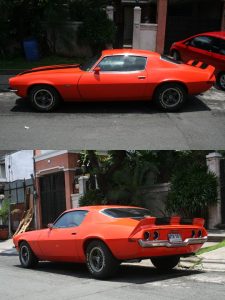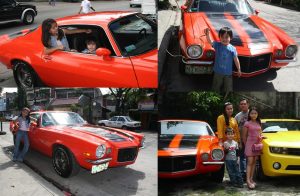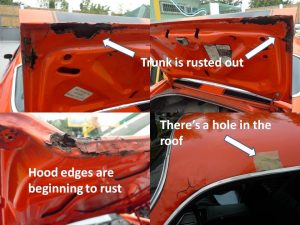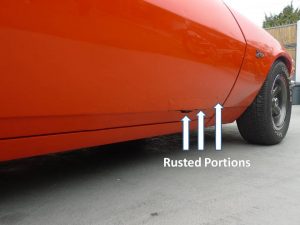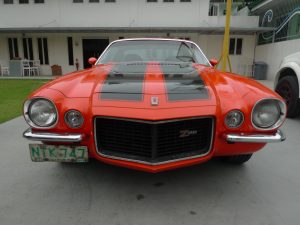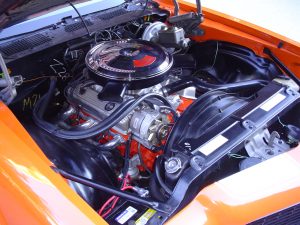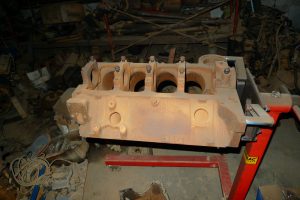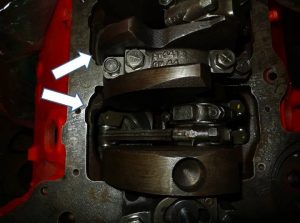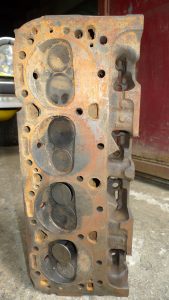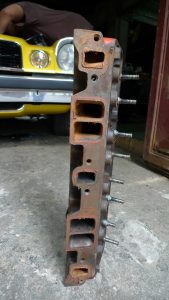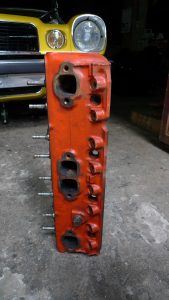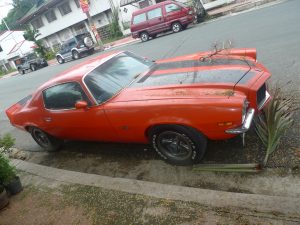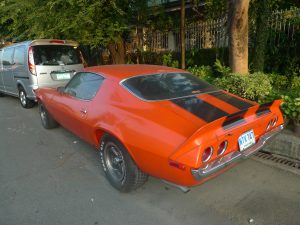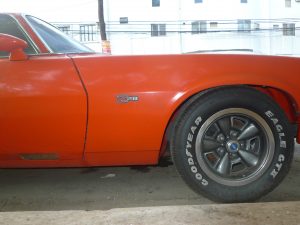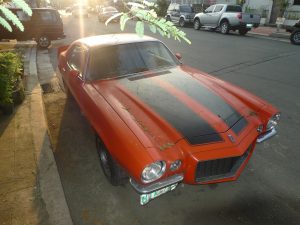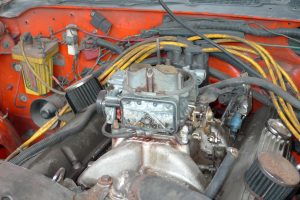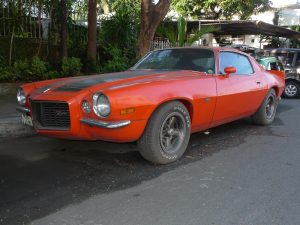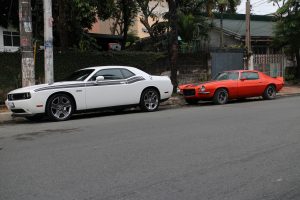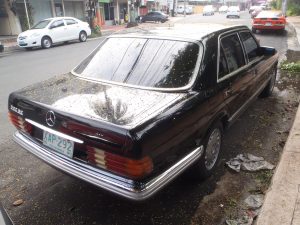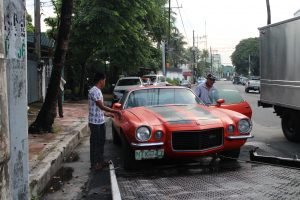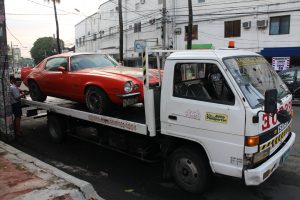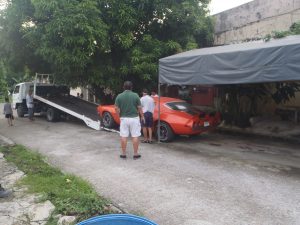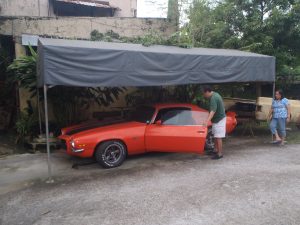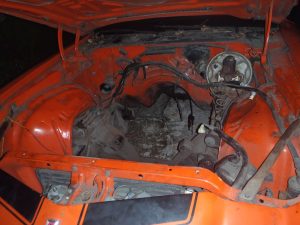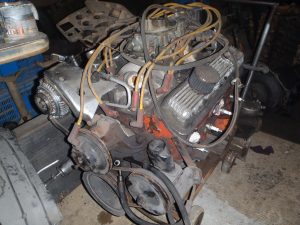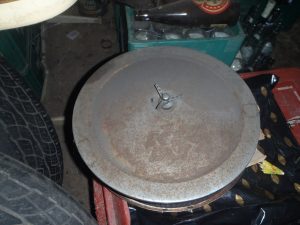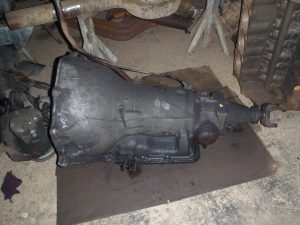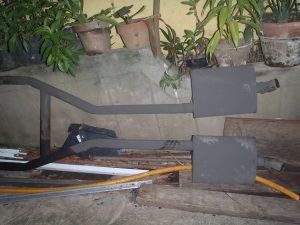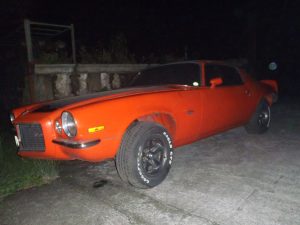If you missed Part 1 of the Project Car series on our 1971 Chevrolet Camaro RS, here’s a short summary: Power Wheels Magazine Editor-in-Chief Lester Dizon bought the car in January 1996 and started working on it piecemeal, as his budget will allow. It went through a nuts-and-bolts restoration at MSG Garage in February 1998, displayed in April at the 1998 Trans Sport Show as the demo car for Audiovox, and then driven and enjoyed extensively until 2003. It was unceremoniously stored for six years while Lester was building a business and rearing a family at the same time. With better finances in 2009, our Camaro was taken out of storage, revitalized, driven and enjoyed extensively again.
Rust Never Sleeps
By early 2011, our project car’s body was noticeably turning into rust. Perhaps, the rushed metal and prep work during its restoration in 1998 was beginning to take its toll. Whatever it was, rust was showing its ugly head at the hood and the trunk lid, as well as on the fenders and the lower portions of the door. Rust has also perforated the roof on top of the driver’s side door. We guessed that it was time for our Camaro to undergo another restoration.
Failure to Ignite
While we were searching the web for new old stock (NOS), reproduction, or even surplus parts to replace our rusted front fenders, hood and trunk lid, the Petronix electronic ignition of our Camaro suddenly died. Without an immediate replacement, we temporarily had it replaced with a contact point and condenser set. Gazing at its engine bay, we realized that our old 307/327 V8 won’t cut it anymore if we were to present our car as a Z-28 “tribute”.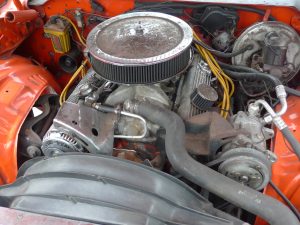
Our Camaro came from the factory with a Turbo-Fire L65 small block Chevy (SBC) V8 displacing 307 cubic inches (5.0-liter) and rated at 200 horsepower at 4,600 rpm and 300 ft-lbs of torque at 2,400 rpm. A previous owner had the L65 bored out to 327cid (5.3-liter) to make more power, estimated at 275hp. To turn our project car into a Z-28, we need to upgrade to a 330hp 350cid (5.7-liter) LT-1 SBC V8 with solid valve lifters that original 1970-73 Camaro Z-28s came with.
No Replacement for Big Displacement
However, finding a period-correct and authentic LT-1 V8 motor can be a very expensive and extremely frustrating proposition. So, we went to ace Chevy mechanic Ben Lim and asked him if he could build us one. Ben sold us a 350 SBC V8 short block from his collection that he will assemble to produce roughly the same amount of power as an LT-1 but fitted with hydraulic instead of solid valve lifters for easier maintenance.
Ben cleaned the engine block and checked it for stress cracks and cylinder wall scratches. While he was searching around his workshop for parts to complete the V8, he found a rotating assembly – crankshaft and pistons – for a 400cid SBC V8. As most Chevy V8 aficionados know, a 400 crank into a 350 block will make a 383 (6.2-liter) “stroker” V8 that can produce between 350 to 500hp. Ben offered to upgrade our 350 to 383 at no extra costs.
Ben also found a pair of high-performance “186” cylinder heads for our 383. Nicknamed “camelback” because of the casting symbols in the front of the heads, these cylinder heads boast of bigger intake and exhaust valves to improve engine and increase power output.
Lack of Focus
The biggest mistake that anybody can do while restoring a car is to lose focus. That’s exactly what happened to us while we were working on our Camaro. First, we became busy with our publishing business. Second, we neglected to come up with a timeline for the completion of the restoration. And third, we delved into other projects – cars, motorbikes, and bicycles – which divided our attention, and our funds, even further. So, while we were busy working on other things, our projectcar sat rusting away on the roadside in front of our old office.
Taken to the Maestro
On June 28, 2013, after several months of procrastination, we finally had the Camaro taken on a flatbed tow truck to the workshop of V8 maestro Ben Lim.
Empty Engine Bay
Two weeks later, on the 6th of July, we visited Ben’s workshop and found the front end of our Camaro sitting quite high. It turns out that he has already removed the old 307/327, which will be traded in for the newly assembled 383 V8. Likewise, Ben will take in our old but still working and reliable Turbo Hydramatic (THM) 350 3-speed automatic transmission as part trade for a refurbished THM 700R-4 4-speed automatic transmission with overdrive. He will also fit our rear differential with a limited-slip Positraction unit. We just hope that the maestro gets to finish all these in due time.
Sometime in October 2013, tropical storm “Habagat” crossed over Metro Manila, and brought heavy monsoon rains and flood waters. Our project car was still waiting for its new 383 V8 at Ben’s workshop when we learned that the area was hit by floods as high as 5 feet. Was it transferred to a safer location and spared from being inundated? Or did it become an engineless “Orange Submarine”? Will we pay a high price for our procrastinated neglect? Log in next week for the continuing restoration saga of our 1971 Chevy Camaro RS. Stay tuned!
 Power Wheels Magazine A Notch Above
Power Wheels Magazine A Notch Above

